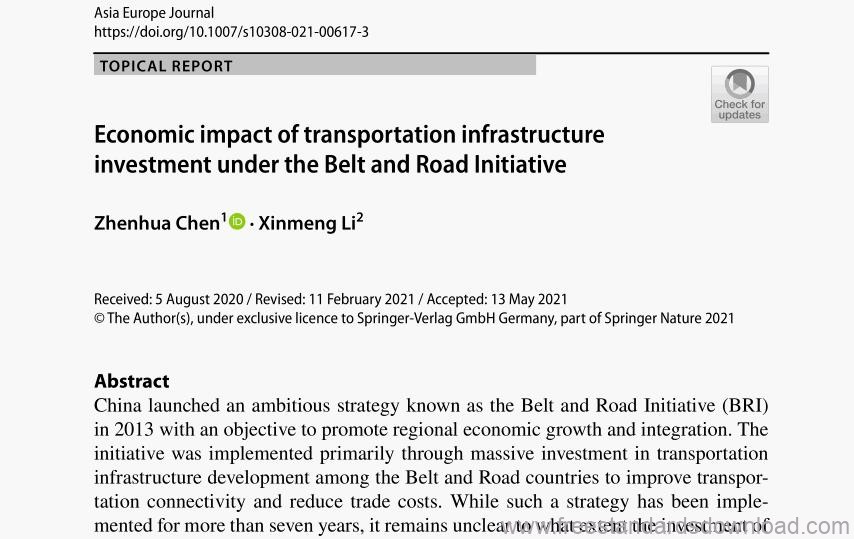
China launched an ambitious strategy known as the Belt and Road Initiative (BR!) in 2013 with an objective to promote regional economic growth and integration. The initiative was implemented primarily through massive investment in transportation infrastructure development among the Belt and Road countries to improve transportation connectivity and reduce trade costs. While such a strategy has been implemented for more than seven years, it remains unclear to what extent the investment of transportation infrastructure has affected the regional economic performance in various countries. To clarify this question, this study provides an in-depth assessment of BRI investment in transportation infrastructure using a computable general equilibrium (CGE) model. Different from previous studies, the regional economic impact was evaluated through CGE simulations based on the actual investment data obtained from various sources. In addition, both the change of intraregional and interregional trade costs as a result of BRI transportation infrastructure investment was estimated. The results show that the transportation infrastructure investment in BRI has generated different impacts among regions. In particular, China, Central and West Asian countries have gained significant growth in GDP. employment, and economic welfare, whereas the economic impact of transportation infrastructure investment in the Central and West Europe is relatively minor. Overall, the research findings provide important policy implications for future transportation infrastructure investment in BR! countries and beyond.

